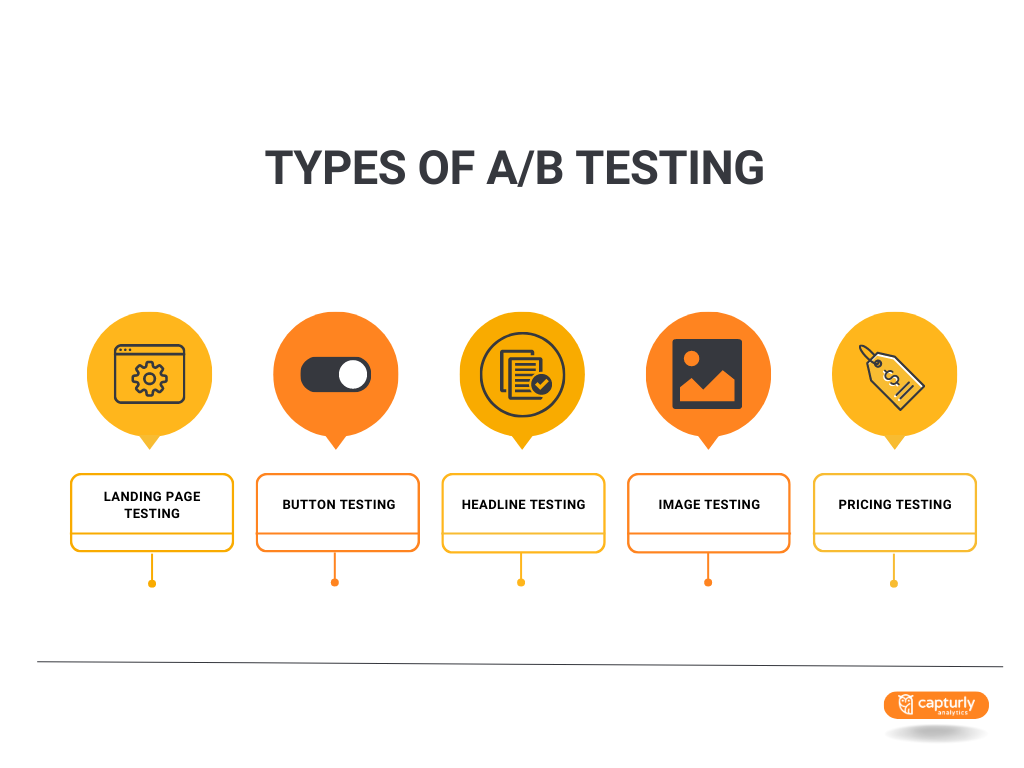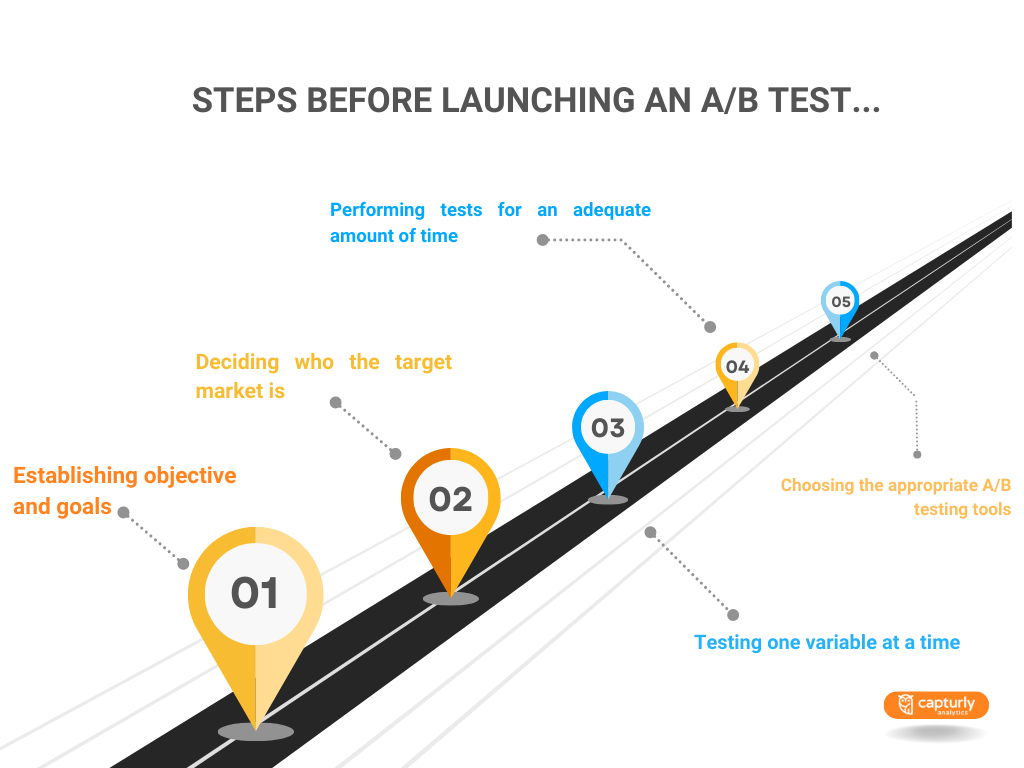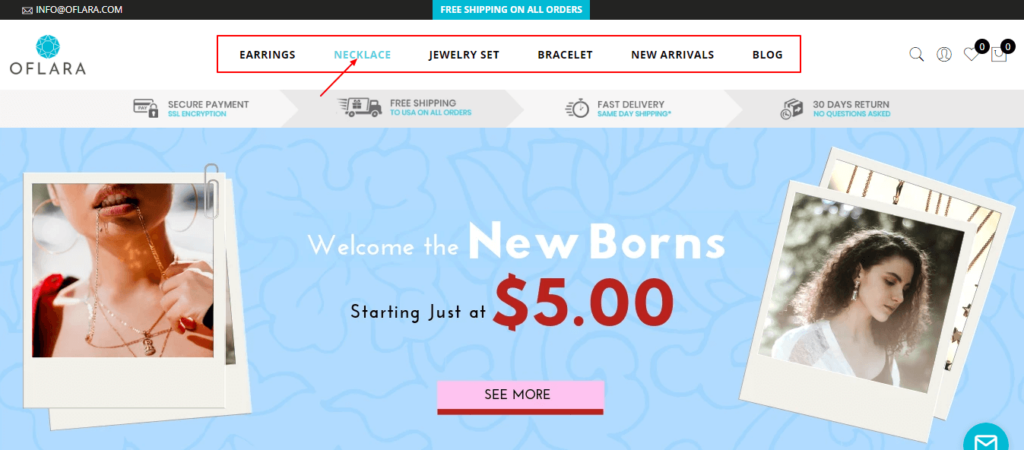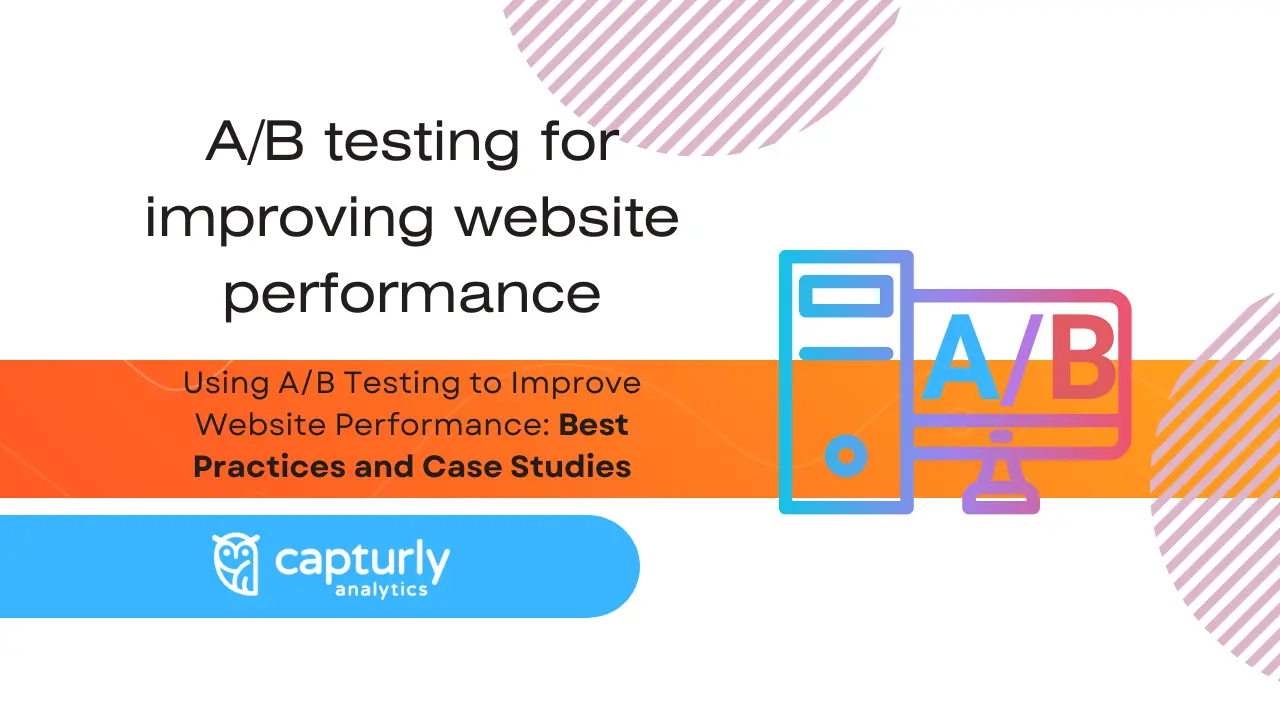Driving traffic to your website is great, but the real buck-maker lies in a website’s capability to retain customers and drive conversions. It can happen that, you have high traffic but you only notice a few conversions.
Many factors influence these revenue-scaling activities – from web design and web content to user experience. Thus, it’s imperative to discover what works best for your customers – but it takes time to figure it out.
A/B testing is an important tool for improving websites in the constantly changing world of marketing. It involves testing two different versions of a website or webpage to see which one performs better. It’s essential to follow best practices for A/B testing to get accurate results and improve website performance. We will look at some case studies to understand how A/B testing can help improve websites.
Table of Contents
What is A/B Testing?
In simple terms, A/B testing is the process of looking at two versions of a website and seeing which one performs better after a given period of time. A/B testing can be used for a variety of purposes, whether it is to drive sales or increase subscriptions.
When you create two versions of a web page, you should change at least one variable between the two. The A/B testing process involves showing different versions of a website or webpage to separate groups of visitors. And in the next step compare the results of each group.
Types of A/B Testing
There are several types of A/B testing, depending on the goal of the test. Some common types of A/B testing include:

- Landing page testing: Contrast two different landing pages to determine which generates more conversions.
- Button testing: Comparing different CTA button colors, sizes, and shapes to determine which one generates more clicks.
- Headline testing: Examining different headline copies to determine which one generates more clicks or conversions.
- Image testing: Comparing different images to determine which one generates more clicks or conversions.
- Pricing testing: Finding out by comparing different pricing strategies which one generates more sales.
Benefits of A/B Testing
The benefits of A/B testing are numerous. But let’s enumerate some, in order to motivate you:
- Better web performance: By using A/B testing, companies can decide whether a version of a webpage is more successful in attaining particular objectives. With the help of A/B testing businesses can boost website performance, including conversion rates, bounce rates, and engagement levels.
- Revenue growth: Companies can improve revenue by optimizing websites for certain objectives, such as boosting sales or lead generation.
- Improved user experience: Businesses can improve the user experience of visitors to their websites by employing A/B testing to optimize the website design. This can result in higher visitor engagement and conversion rates.
- Smart decision-making: A/B testing gives businesses the information they need to decide how to optimize their websites. Businesses may avoid making expensive mistakes and enhance website performance by using data to inform their decisions.
Best Practices for Conducting A/B Tests
You can make sure that your test results are precise, trustworthy, and usable by adhering to best practices. To make sure your A/B testing is correct, it’s important to follow certain procedures. This includes:
- Choosing the right sample size (the number of people who will see the test).
- Deciding which metrics (data points) to use to measure performance.
- Avoiding common mistakes that can affect the results, and running the test for the right amount of time.
By following these best practices, you can improve the user experience of your website and find the most effective version of a web page. This can lead to better conversion rates, higher engagement levels, and improve the performance of your website.
The following are important actions you should do before launching your A/B tests:

Establish precise objectives and goals.
Before conducting an A/B test, you should establish certain goals and objectives. The goals and objectives should be precise, quantifiable, and aligned with the aspirations of the business. As an illustration, a business might seek to increase conversion rates on a particular landing page by 20%. This goal is specific, measurable, and aligned with organizational objectives.
Decide who the target market is.
Prior to running an A/B test, you must identify the target audience. The target audience should be representative of all viewers of the website and have a large enough sample size to yield statistically significant results.
Test one variable at a time.
One way to make sure the outcomes of an A/B test are accurate and unaffected by other variables is to test just one variable at a time. It’s important to test just one variable at a time to prevent it from being impacted by other factors. For instance, a corporation should only test one color at a time to evaluate the efficiency of different button colors. By doing so, they can maintain consistency between the two versions of the website for all other factors.
Perform tests for an adequate amount of time.
An A/B test must run for a long enough period of time to guarantee that the results are statistically significant and unaffected by random variations. The test shouldn’t be too long so as to negatively affect the functioning of the business. But it also has to be just long enough to gather a representative sample of customers. In general, the test should last at least two weeks and involve at least 100 users testing each version.
Choose the appropriate A/B testing tools.
A range of tools, from simple, free ones like Google Optimize to more sophisticated ones like Optimizely and VWO, are good choices for A/B testing. While choosing a solution, it’s important to consider factors like pricing, functionality, and integration with website analytics tools.
Case Studies and Examples of Successful A/B Tests
A/B testing has been used by many businesses to improve website performance. Below are some case studies and examples of successful A/B tests.
A/B testing for website design
Web layout
WWF increased newsletter subscribers by 83% by redesigning their web layout and adding a significant photo.
Original version:
The reason why it was such a success was that the new layout provided more information about what subscribers could expect. It also added a sample picture that provides what the newsletter layout would look like while aligning the CTA button to the form.
New version:
Color
Performable, a provider of marketing automation software that HubSpot eventually acquired, is one business that successfully A/B tested a color variable on its website. They conducted an A/B test to see which button color would increase conversions on their sign-up page. A red button and a green button were explored as two alternatives.
During the A/B test, they discovered that the red button worked far better than the green button, leading to a 21% increase in conversions. This small adjustment had a big effect on the company because it increased sign-ups, consumers, and income.
A/B testing for website copy
Headline
Monthly 1K, a website that offers courses and resources for people who want to start and grow a profitable online business, wanted to determine which headline would result in more sign-ups for their email newsletter. They tested two variations of the headline:
- Original: “Join the Monthly 1K Family – Get Weekly Business Tips to Grow Your Online Business to $1,000/month and Beyond.”
- Variation: “Get Weekly Business Tips to Build a Profitable Online Business.”
The A/B test revealed that the variation title performed 89% better than the original headline. More people signed up for their email newsletter as a result of the alternative title, showing that it was more effective at conveying the value proposition of their company.
Call-to-action (CTA) button
Friendbuy, an organization that allows marketers to build referral programs and promote customer acquisition, experienced a 211% increase in click-through rate (CTR) by doing a simple A/B test on their product demo CTA.
They tested two variations of their original CTA, “Wanna see it? Share Friendbuy with friends!”. Variant 1 (“Test it out”) performed 71% better, while variant 2 (“See demo”’) achieved a 211% increase.
What made their variations a success was eliminating the complication and vague qualities of the original CTA. Variant 2 gave clear instructions and used the phrase “demo,” which is a term that is well-defined and universally recognized.
A/B testing for website functionality
Website navigation
BrillMark conducted an A/B test trial for Oflara, a Shopify e-commerce website. Originally, there wasn’t much to choose from in the navigation menu to make it interesting because the site is fresh and small. Despite having fewer categories, they increased the number of components in the menu to make it more engaging.
The idea was that the best sellers for each category should be displayed in the navigation bar along with a call-to-action (CTA) link to the complete collection. The immediate access to the featured products’ product detail pages (PDP) is hypothesized to boost conversion rates.
Original version:

Therefore, they’ve included four bestsellers with clickable photos that point to their PDPs in each category. A CTA that pointed people to the category pages themselves was also utilized.
New version:
It provided Oflara the room to emphasize their current offer. They conducted a test on Google Optimize, and following a thorough quality control procedure, they applied the results to the real website. The remainder of the audience saw the original while the other half watched the variation (the control in the experiment).
After conducting the A/B test for about a week, the researchers found that the variation they tested actually increased the number of direct visitors to the website and resulted in more clicks. This led to a significant increase in revenue of 53%. This conclusion disproved their initial assumption that websites with many categories could only benefit from using mega menus.
A/B Testing and Analytics
Analytics and A/B testing are crucial because they give organizations the ability to make data-driven decisions that can enhance user experience, website performance, and, ultimately, commercial results. Businesses can determine what works and what doesn’t by testing many iterations of a web page and tracking user behavior using analytics. Then, they can decide how to optimize their website for increased performance. Increased engagement, higher conversion rates, and eventually higher revenue can result from this. Analytics and A/B testing offer useful information that aids in the competitiveness, relevance, and growth of enterprises.
How is A/B testing integrated with website analytics?
- Platforms for website analytics like Google Analytics or Adobe Analytics frequently integrate with A/B testing solutions. This enables companies to monitor key performance indicators (KPIs), including conversion rates, click-through rates, and bounce rates, for their A/B experiments.
- Businesses can learn more about how their website visitors engage with their website by integrating A/B testing with website analytics. In order to improve the outcomes of their A/B tests, businesses can track user behavior, such as how long visitors stay on the website or which pages they view.
- Businesses can also detect potential problems or obstacles that might be impairing website performance with the aid of A/B testing and website analytics. A/B testing can be used, for instance, to test various versions of a page if a company notices a high bounce rate on a certain page and determine which one performs better. Also, they can employ website analytics to pinpoint the cause of the high bounce rate, such as sluggish page loads or perplexing navigation.
- To acquire even more insight into user behavior, A/B testing can be used in conjunction with other website analytics tools like Capturly’s heatmaps or session recordings. Businesses can, for instance, utilize the heatmap tool to observe where people are clicking on their website and then use this knowledge to enhance their A/B tests for better outcomes.
- A/B testing and website analytics integration enable companies to monitor the effects of their A/B tests over time. Businesses may assess the long-term effects of their A/B tests and make data-driven decisions about how to optimize their websites for better outcomes by recording KPIs for their A/B tests and comparing them to baseline metrics.

Benefits of using A/B testing with website analytics
- You may discover and comprehend your target audience by using A/B testing and website analytics. You can design more individualized experiences that are catered to the requirements and tastes of your target audience by evaluating user behavior and preferences.
- You can prioritize website optimization efforts using A/B testing and website analytics. You can concentrate A/B testing efforts on the areas that will have the highest influence on web performance by determining which pages or regions have the biggest impact on user behavior.
- You can find and address issues with website performance using A/B testing and website analytics. You can detect problems like slow loading times, difficult navigation, or bad design by monitoring user behavior and website analytics, and then use A/B testing to uncover fixes that enhance overall website performance.
- You can track and evaluate the effects of their website optimization efforts by combining A/B testing with website analytics. You can observe the long-term effects of your A/B testing and make data-driven decisions on how to improve your website for better outcomes by analyzing KPIs and user behavior over time.
- Your organization may stay competitive by using A/B testing and website analytics. It can remain ahead of the competition and make sure that your website is always operating at its optimum.
Conclusion
A/B testing is a useful tool for enhancing website performance and attaining particular business objectives. Businesses can obtain insights into how various aspects affect website performance and make data-driven decisions to optimize their websites for better outcomes by adhering to best practices for doing A/B tests. Thus, it’s highly important to have a competent growth marketer on board who is highly experienced in A/B testing.
It’s important to keep in mind that A/B testing is an ongoing process that should be done regularly by the team, either under the guidance of the organization’s top-level management or a growth marketer. Performance on websites can change over time; therefore, what works now might not function tomorrow. By regularly monitoring website performance and conducting frequent A/B tests, businesses can stay ahead of the competition and continuously improve their websites for better results.
Don't forget, sharing is caring! :)


